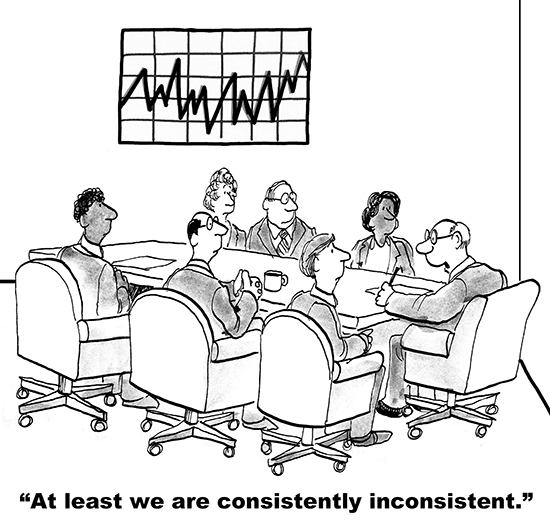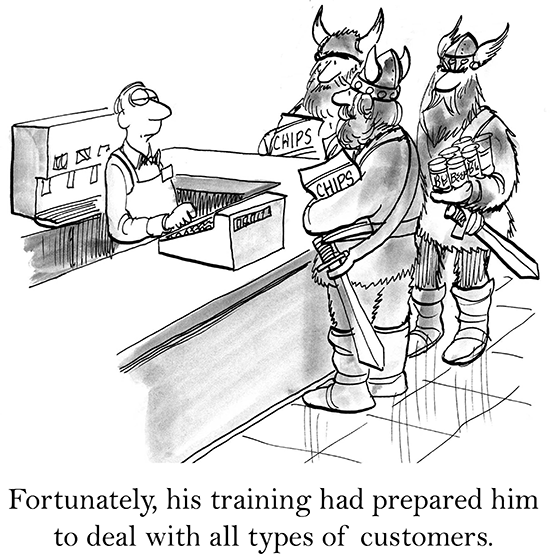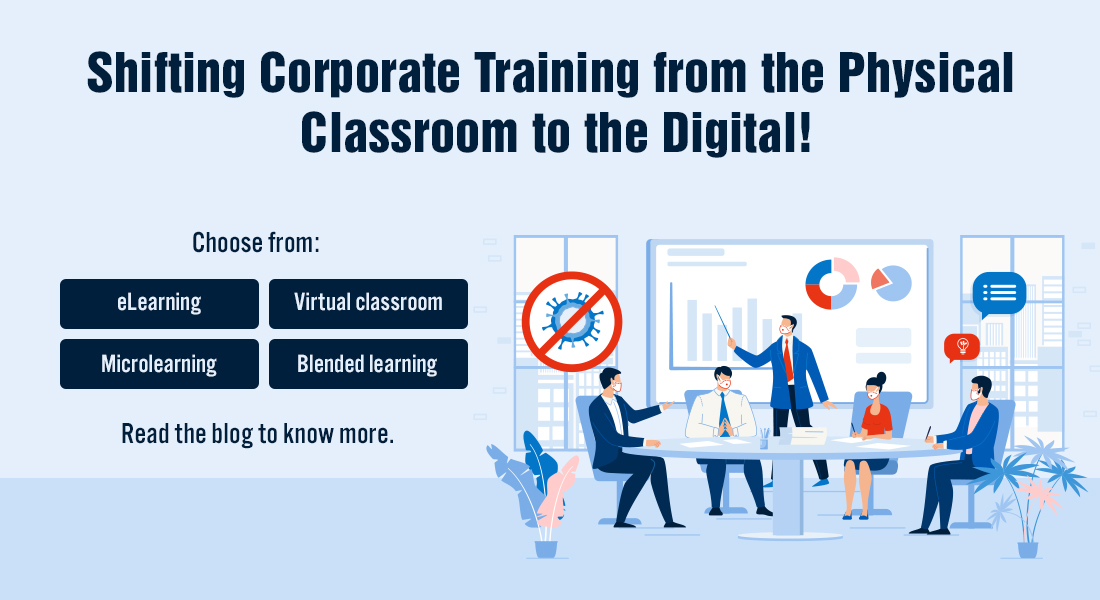7 Best Practices to Create Value from Corporate Training

Most organizations spend a lot on their training budgets, as does yours too I’m sure. But do you know how much value your corporate training programs generate? Often, we measure the success of a training program by smiley sheets or the number of employees who’ve completed training. But, does this measure the true business value of the training program?
7 Ways to Create Value from Corporate Training
- Align learning with business goals
- Use flexible learning solutions
- Plan for consistent training delivery
- Reinforce training
- Deliver global training
- Quantify the impact of training
- Rollout training at the right time
What Can You Do to Create Value from Corporate Training?
Here are some best practices that top performing organizations swear by.
1. Align Learning with Business Goals
According to a research by Brandon Hall Group, only 38% of organizations have their learning strategy aligned with business goals. And 1 in 6 companies don’t even have a learning strategy to speak about!

When training is aligned to business goals, you can turn your business in the right direction. Here are some tips to help.
- Work with senior managers to understand the business metrics that need to be improved.
- Do a thorough analysis of the business problem and identify the training gaps before you finalize the training solution.
- After completion of the training, let the leadership and senior manages know about the goals/results of the training. Highlight how it has helped the employees and the organization.
2. Consider Using Flexible Learning Solutions
It’s not easy to make every training program interesting to your audience. There are certain types of training that are mandatory – Compliance, Code of Conduct, IT Security, Ergonomics, to name a few. Think about a classroom training session for such topics. Even if the trainer does a great job at delivering training, it’s more than remotely possible that learners forget half of it as soon as they walk out through the classroom door.

After a formal structured classroom training, you’re not just dealing with the forgetting curve, you also have the doorway effect. According to the doorway effect, our brains are wired to consider certain boundaries as markers, and when we walk through a doorway, our brain considers the task as complete and files it away as done. It sounds crazy but it’s true that after walking through a door, both the young and old have the same level of forgetfulness.
While classroom training will always remain the bedrock of training, certain types of training demand flexible solutions. To introduce flexibility in classroom training, integrate it with online training to create a blended learning solution.
You could reinforce learning by making use of rapid eLearning and microlearning solutions, or leverage mobile learning to provide quick performance support on mobile devices. The choices are plentiful when you opt for online corporate training solutions.
For more insights on blended learning, access this guide now!
3. Plan for Consistent Training Delivery
As organizations continue to grow, they’ve to face the challenge of delivering training that’s consistent and relevant.

Apart from ensuring that training delivery is consistent, you also need to have great content.
Watch out for other factors too such as learning technology and training administration that impact the effectiveness of training.
Maintaining consistency in training content and delivery is much easier with online training than with classroom training, for obvious reasons. The Right LMS that meets your organizational training needs along with the right training solution can improve your training efficiency by leaps and bounds.
When you deliver consistent training, it helps your employees:
- Stay motivated to improve themselves and their job performance
- Be more satisfied with their jobs
- Be aware of the opportunities and benefits offered by training
4. Provide Reinforcement of Training
Whoever said corporate training was easy? Even if you’ve rolled out an amazing training program, it does not mean that learners are going to remember everything that was taught. So, how do you battle the forgetting curve?

Retention of learning increases when learners get a chance to immediately apply what they’ve learned, to their tasks at work. But that does not happen always.
There are any number of tasks that are not very frequently performed but that does not detract from their importance, for example, a training program on IT disaster management. It’s not every day that an employee gets to execute a disaster recovery plan. At the same time, it is imperative the learner is well versed with the program.
So, again, how can you help learners fight the forgetting curve? That’s right! By providing effective learning reinforcement. How? Through online training – microlearning and nanolearning are excellent formats for reinforcing training.
5. Deliver Global Training
If your organization already has a global presence or intends to check out new locations, you have the responsibility of getting your workforce ready to work efficiently across different countries, cultures, and time zones.

Whether you have one set of learning goals or multiple sets for different topics, you need to ensure they are delivered consistently across geographical boundaries.
Before you design a global training program, you need to pinpoint the stakeholders who’ll:
- Determine the content
- Decide on the training strategy
- Determine the utility of training
Modern corporate training solutions break the barriers of time and space by delivering training exactly at the employee’s moment-of-need.
6. Quantify the Impact of Corporate Training
‘ROI’ is the magic word that most stakeholders obsess about. But it isn’t always easy to prove the return on investment (ROI) of training.

Measuring ROI of training isn’t easy, but it isn’t impossible either. Here are a couple of questions you can ask to measure the impact of training.
- Were employees able to improve their work performance after taking the training?
- Did the training help employees enhance their knowledge and skills?
- Did the training provide any other additional benefits?
Here’s an example. If you have a project to complete, try to quantify the time taken by a trained employee to complete the project versus an untrained one. The difference between the two can help you assess the impact of training. Trained employees are obviously going to be more productive and this indirectly results in cost benefits to the company.
7. Rollout Training at the Right Time
As the demand for skills and technologies evolves, corporate training also has to evolve to keep up. If your employees are looking to be trained on a specific skill at a particular point of time, planning to provide the training ‘later’ isn’t going to help. Training that’s not timely is training that’s not going to be effective.

When you have to rollout training to meet a sudden demand – for example, a change in compliance policies, or handling the breakout of a new strain of virus (in healthcare organizations), employees can’t be kept waiting. Rapid eLearning is one among the many corporate training solutions that can meet this need effectively.
Rolling out training at the right time, at the point of need, makes learners more receptive to and more involved in the learning experience.
A Parting Note
When you design and deliver corporate training solutions that are accessible across the globe, delivered in diverse formats, and mapped to the goals and objectives of the organization, you don’t have to create value in training, it’s already there!
While classroom training will continue to have its own place, the myriad online corporate training solutions brighten the horizon of future learning and development. It’s up to you to choose the right one. If you’ve to continue to create training programs that offer value, you need to ensure your training programs are based on a strong foundation of instructional design.
Download our free eBook if you’d like to know more about rapid online corporate training solutions.




![6 Ways to Use Virtual Training for Employee Training [Slideshare]](https://blog.commlabindia.com/hubfs/Imported_Blog_Media/corporate-training-virtual-training-methods-slideshare.jpg)
